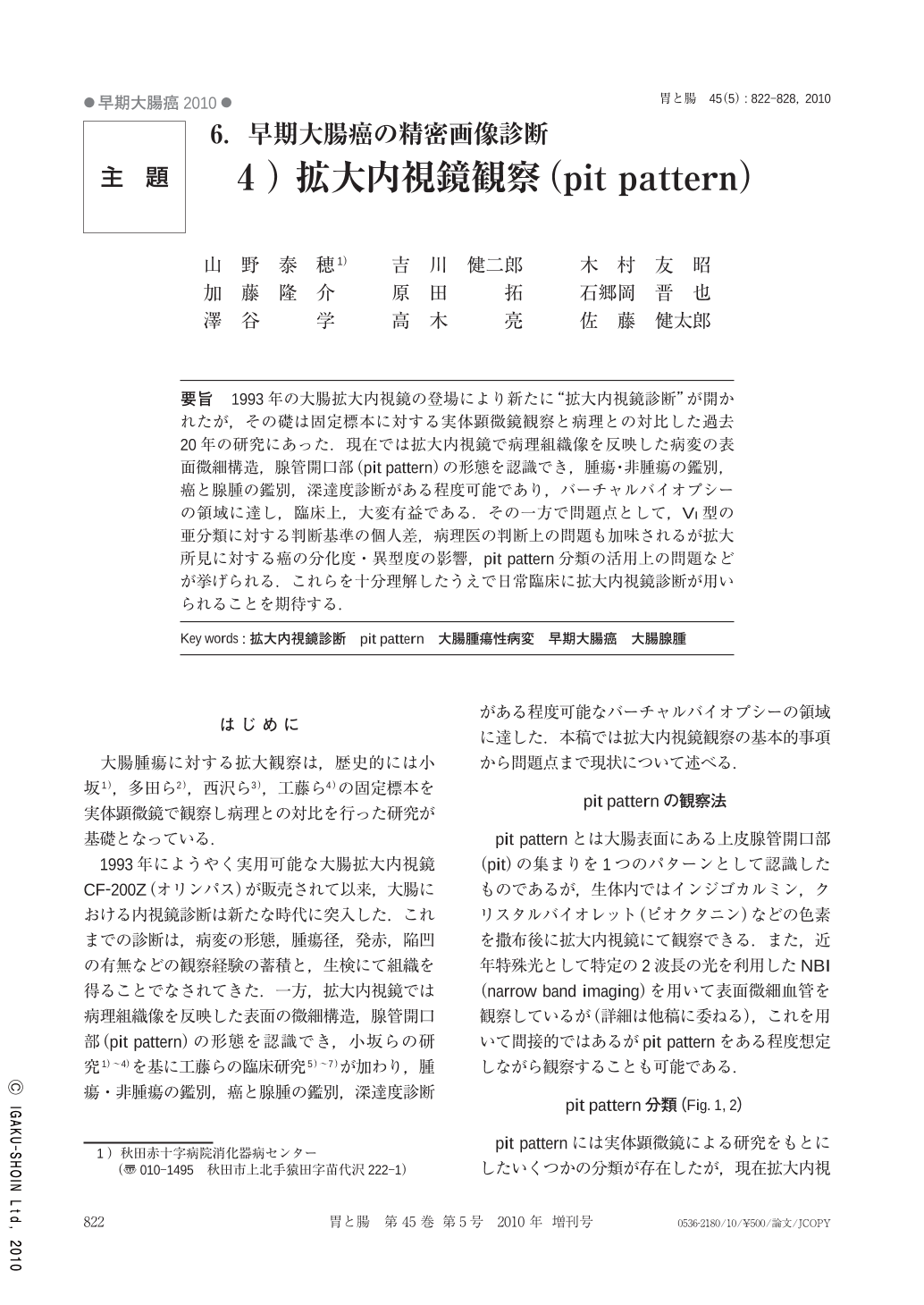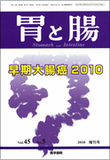Japanese
English
- 有料閲覧
- Abstract 文献概要
- 1ページ目 Look Inside
- 参考文献 Reference
- サイト内被引用 Cited by
要旨 1993年の大腸拡大内視鏡の登場により新たに“拡大内視鏡診断”が開かれたが,その礎は固定標本に対する実体顕微鏡観察と病理との対比した過去20年の研究にあった.現在では拡大内視鏡で病理組織像を反映した病変の表面微細構造,腺管開口部(pit pattern)の形態を認識でき,腫瘍・非腫瘍の鑑別,癌と腺腫の鑑別,深達度診断がある程度可能であり,バーチャルバイオプシーの領域に達し,臨床上,大変有益である.その一方で問題点として,VI型の亜分類に対する判断基準の個人差,病理医の判断上の問題も加味されるが拡大所見に対する癌の分化度・異型度の影響,pit pattern分類の活用上の問題などが挙げられる.これらを十分理解したうえで日常臨床に拡大内視鏡診断が用いられることを期待する.
We entered a new era of endoscopic diagnosis with the appearance of Magnifying colonoscopy in 1993. For the past 20 years it has been used for comparative research on stereomicroscope observation and the pathology of fixed samples. Recent development has enabled us to easily observe the surface microstructures and crypt orifices of any lesions in the colon or rectum. It has make it possible for us to distinguish accurately pathological features such as neoplasm or non-neoplasm, adenoma or carcinoma, degree of invasion etc. At present, magnifying colonoscopy has reached stage that can be called “virtual biopsy” and it has remarkable value for clinical use etc.
However, the present stage of the technology is not completely free of difficulties. For instance, the individual variation of criteria, the influence of differential level and dysplatic grade of cancer, the meaning in pit pattern classification use . After sufficient solution of these difficulties has been gained, it can be expected that diagnosis based on magnifying colonoscopy will become used in daily clinical practice.

Copyright © 2010, Igaku-Shoin Ltd. All rights reserved.


